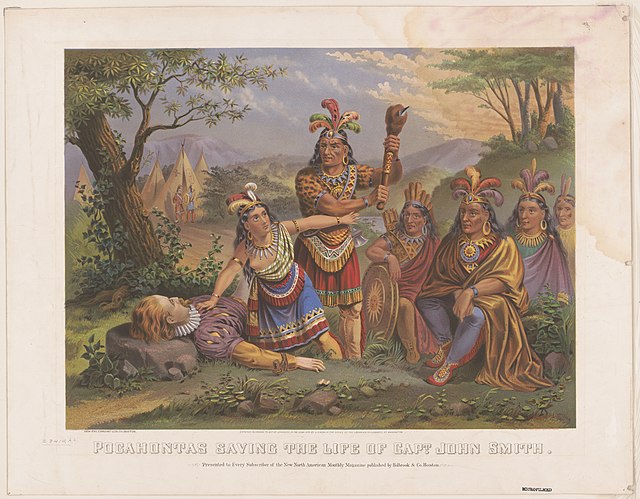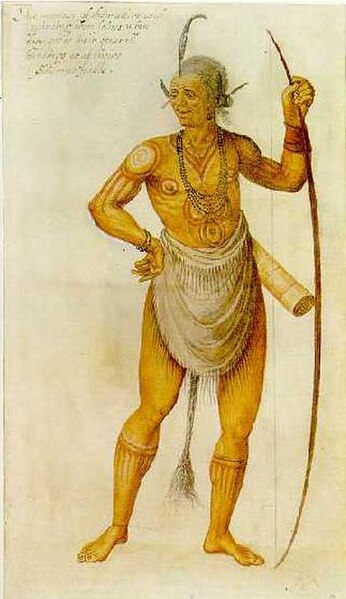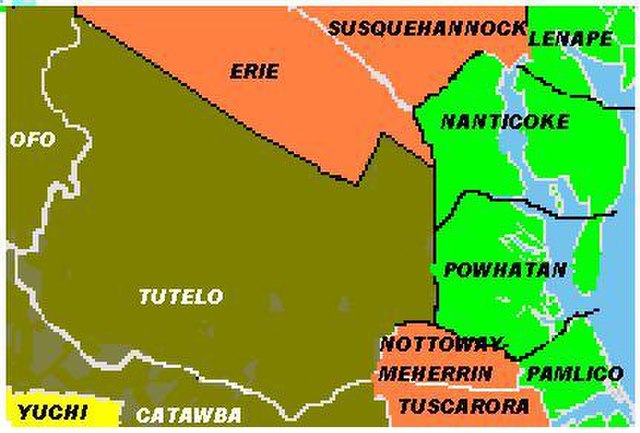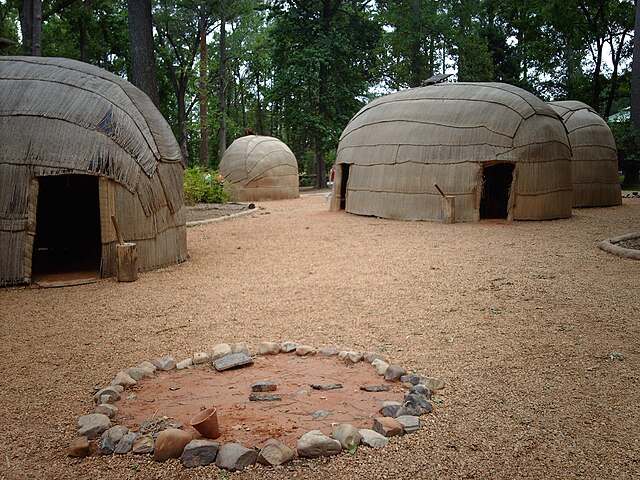Pocahontas was a Native American woman belonging to the Powhatan people, notable for her association with the colonial settlement at Jamestown, Virginia. She was the daughter of Powhatan, the paramount chief of a network of tributary tribes in the Tsenacommacah, encompassing the Tidewater region of what is today the U.S. state of Virginia.
Pocahontas saves the life of John Smith in this chromolithograph, credited to the New England Chromo. Lith. Company around 1870. The scene is idealized; there are no mountains in Tidewater, Virginia, for example, and the Powhatans lived in thatched houses rather than tipis.
The abduction of Pocahontas (1624) by Johann Theodor de Bry, depicting a full narrative. Starting in the lower left, Pocahontas (center) is deceived by weroance Iopassus, who holds a copper kettle as bait, and his wife, who pretends to cry. At center right, Pocahontas is put on the boat and feasted. In the background, the action moves from the Potomac to the York River, where negotiations fail to trade a hostage and the colonists attack and burn a Native village.
John Gadsby Chapman, The Baptism of Pocahontas (1840). A copy is on display in the Rotunda of the United States Capitol.
Statue of Pocahontas outside St George's Church, Gravesend, Kent, where she was buried in a grave now lost
Native American tribes in Virginia
The Native American tribes in Virginia are the Indigenous peoples whose tribal nations historically or currently are based in the Commonwealth of Virginia in the United States of America.
A 1585 watercolor of a Chesapeake Bay warrior by John White
Estimated linguistic divisions c. AD 1565. Green is Algonquian, orange is Iroquoian, and olive is Siouan languages.
Reconstruction of a Powhatan village at Jamestown Settlement
The story of Pocahontas, the daughter of Chief Powhatan and an ancestor of many of the First Families of Virginia through her marriage to John Rolfe, was romanticized by later artists.








